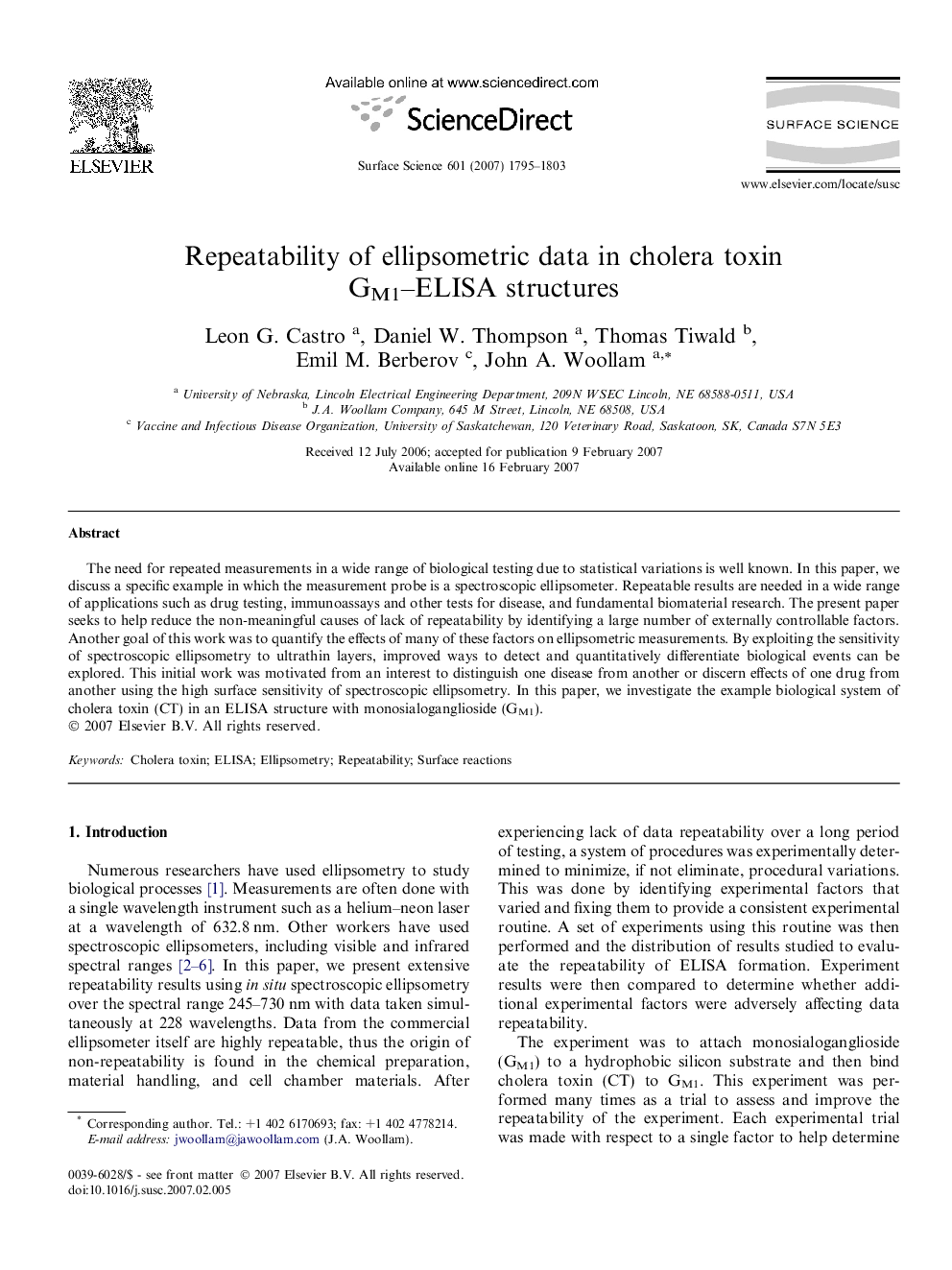| Article ID | Journal | Published Year | Pages | File Type |
|---|---|---|---|---|
| 5426037 | Surface Science | 2007 | 9 Pages |
The need for repeated measurements in a wide range of biological testing due to statistical variations is well known. In this paper, we discuss a specific example in which the measurement probe is a spectroscopic ellipsometer. Repeatable results are needed in a wide range of applications such as drug testing, immunoassays and other tests for disease, and fundamental biomaterial research. The present paper seeks to help reduce the non-meaningful causes of lack of repeatability by identifying a large number of externally controllable factors. Another goal of this work was to quantify the effects of many of these factors on ellipsometric measurements. By exploiting the sensitivity of spectroscopic ellipsometry to ultrathin layers, improved ways to detect and quantitatively differentiate biological events can be explored. This initial work was motivated from an interest to distinguish one disease from another or discern effects of one drug from another using the high surface sensitivity of spectroscopic ellipsometry. In this paper, we investigate the example biological system of cholera toxin (CT) in an ELISA structure with monosialoganglioside (GM1).
